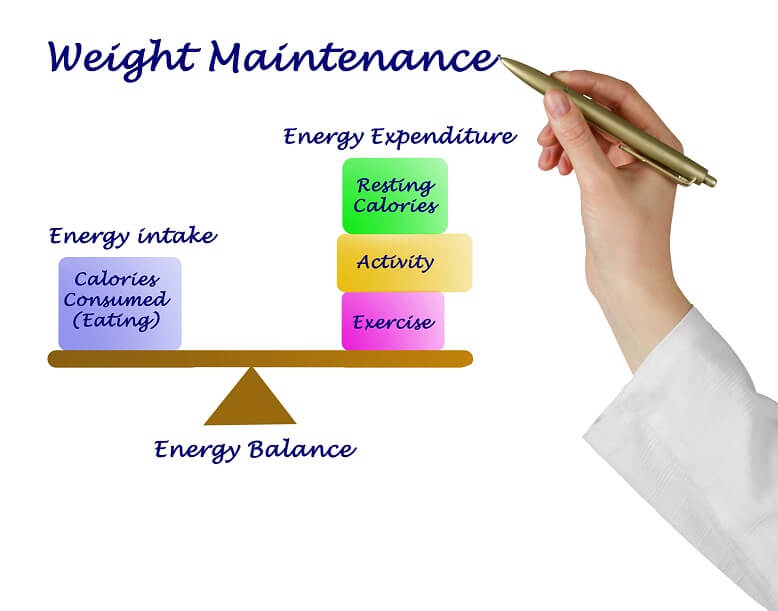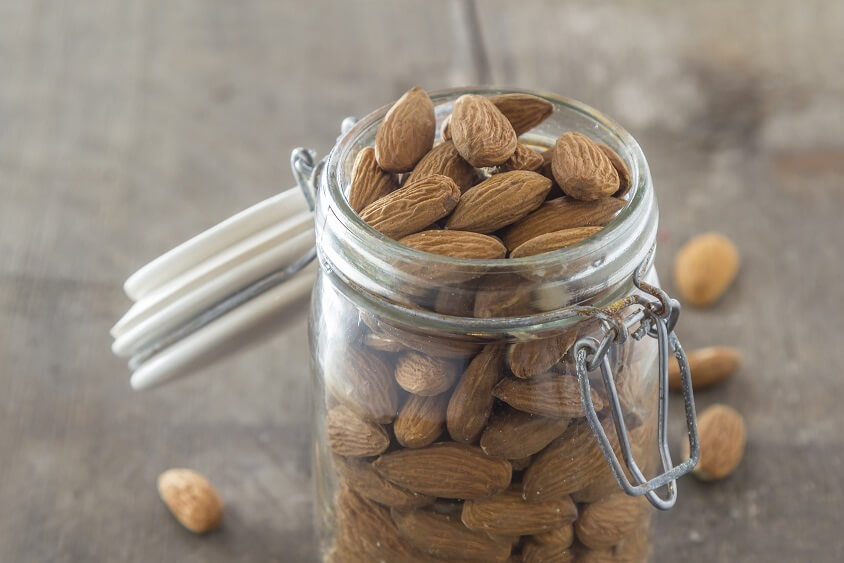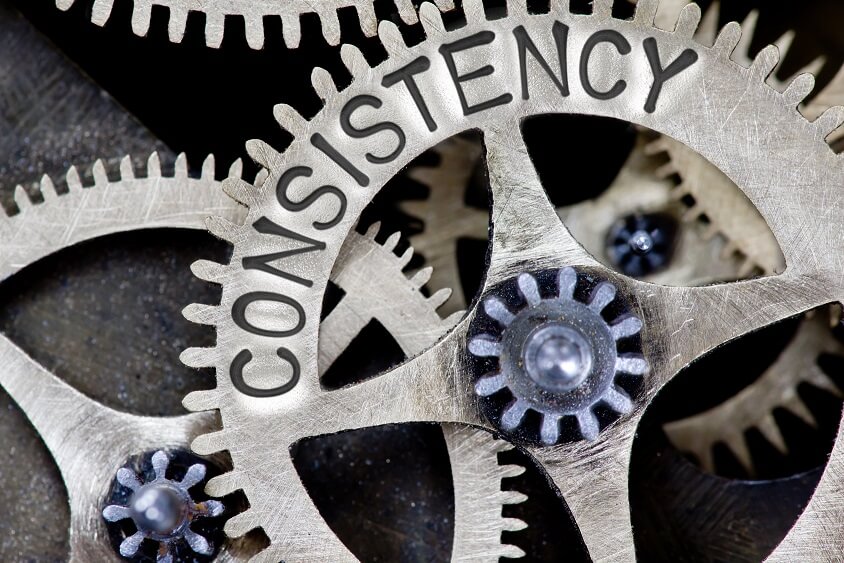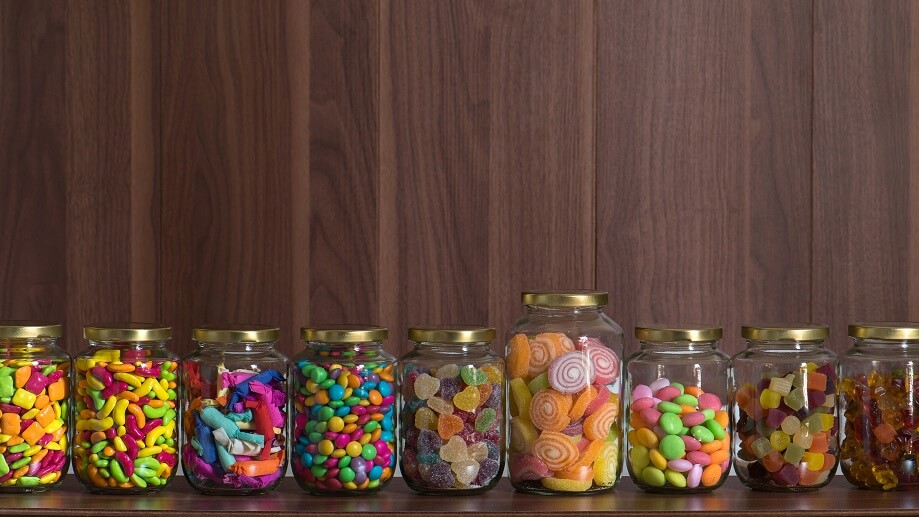Most overlooked diet mistakes and how to fix them

Starting a diet is hard. Sticking to a diet is even harder. However, there are definitely ways to tip the scales in your favor (pun intended) and make sure that you set up an environment where you can succeed and reach your fitness goals.
First and foremost, you should be proud for coming here and looking to take action or learn more about incorporating a diet to improve an aspect of your life, whether that is for health reasons, to look better, to feel better, or all of the above.
Most people make these simple mistakes that can be fixed or avoided quite easily once you know what to do. Many of them are not as intuitive or obvious but the effects will speak for themselves.
The best part? They are actionable steps you can take immediately and keep in the back of your mind forever.
The Diet Mistakes

Don't incorporate working out into the plan
Solution – Combine diet efforts with other exercises such as our Kettlebell Workouts or Kettlebell Exercises. Skip to this diet mistake.
Caffeine Abuse
Solution – Make a caffeine schedule & limit stimulant consumption to make sure you aren’t dependent on it for energy or build up a huge tolerance Skip to this diet mistake.

Not understanding nutrition labels
Solution – Familiarize yourself with basic concepts of daily value %’s and ingredients Skip to this diet mistake.

Blindly trusting the "healthy" food sticker or "protein" label
Solution – Checking out the contents of the nutrition label, before eating/cooking. Skip to this diet mistake.

Eating healthy foods regardless of the quantity
Solution – Double-checking the portion size before eating/cooking. Skip to this diet mistake.
Having an all or nothing mentality
Solution – Acknowledge that some days you will take two steps forward, and some days you will take a step backwards. The key to success is to realize how to make sure that the sum total of your combined efforts is in the forward direction. Skip to this diet mistake.

Ineffective reward system
Solution – Make sure you reward your diet efforts with something that will promote continued progress Skip to this diet mistake.

Not focusing on high satiety foods
Solution – Focus on foods that have high “satiety” within the diet to help you stay full longer. Skip to this diet mistake.

Not ramping up changes properly
Solution – Make changes in a small controlled manner so that you can maintain consistency Skip to this diet mistake.

Not creating consistency
Solution – Try not to make too many changes to your routine until you know what works well, and what does not. Skip to this diet mistake.

Associating being tired with being hungry
Solution – Try and stick to somewhat of a regular sleeping schedule & proper sleep. Skip to this diet mistake.

Having too much access to junk foods
A Solution – Never go to the grocery store hungry if possible & go in a well-fed state Skip to this diet mistake.

Don't make the changes enjoyable
Solution – Aim for a diet that is maintainable, not one that is more effective but miserable Skip to this diet mistake.

Not acknowledging you will be hungry or have cravings
Solution – Plan for cravings and preemptively tell yourself “When I get home, I’m going to want x but instead i’ll eat y” Skip to this diet mistake.
Don’t incorporate working out into the plan

Let’s suppose that we are talking about the weight gain/loss over a week period.
For the most part –
If you are gaining weight, it means you are consuming more calories than you are burning.
If you are losing weight, it means that you are burning more calories than you are consuming

If your goal is weight-loss, you can either decrease the calories you are consuming, or increase the calories you’re burning, or both. By far, the best approach is to do both – decrease calories consumed (through a healthy diet), as well as increase the calories burned through metabolic workouts like the ones we have in the kettlebell workouts section. A big mistake people make is not incorporating working out alongside a calorie deficit, slowing their progress.
Solution – Pick the workouts that will help you reach your fitness goals and that you enjoy. Here at KettlebellCentral.com we unsurprisingly recommend our fantastic kettlebell workouts that will help you burn fat and tone your body overall to help you reach your fitness goals.
Caffeine Abuse
Everyone loves their morning coffee, but when it gets to the point that it is now something you need in order to function and not something that provides extra energy in addition to what you already have, chances are you have adrenal fatigue and are your nervous system is not in tip-top shape. Not that using coffee is a strict no-no, but rather let’s make sure that you use it in the most intelligent way possible, and make it work towards your fitness goal.
Solution – Make a caffeine schedule. What? Yes, I know it may sound a little weird, but trust me, it will help tons. First, I would suggest to try and make sure that you don’t go longer than 3 days straight using caffeine without a caffeine-free day. The caffeine-free day, will give your nervous system somewhat of a break and will slow down the dependency of caffeine. In addition, try and take a few weeks of caffeine all together every few weeks in order to fully revitalize your adrenal receptors.
Also try and stay away from using caffeine within about 10 hours of bedtime in order to make sure your sleep is not affected by your coffee consumption.
What has worked the best for me is trying to abstain from caffeine altogether except for prior to working out in the mornings. So I would take my coffee prior to my workout before work. It gives me extra energy and leaves me feeling great the entire day and I have reduced any caffeine-related sleep issues.
Given that the half-life of caffeine is approximately 5 to 6 hours, I would recommend not taking caffeine anywhere close to bedtime in order to help maintain good sleep quality and recovery.
Anxiety, jitters, and lowered sleep quality are some of the negative symptoms of caffeine abuse, also mentioned in the following link. https://cspinet.org/tip/beware-these-effects-caffeine-body
Another alternative is to swap the coffee for tea to give you a little extra energy without the same amount of caffeine, in order to lower your dependency and give you a more balanced and smooth energy level throughout the day. I personally try and go caffeine-free or take yerba mate tea on the weekends instead to give myself a break from the caffeine I take during the weekdays.
In case you are curious, the center for science in the public interest published a chart that shows the relative caffeine amounts in some of the most commonly consumed beverages.
https://cspinet.org/eating-healthy/ingredients-of-concern/caffeine-chart
Not understanding nutrition labels

You have to be aware of what you are putting in the tank so that you can be able to effectively make the determination of whether or not your next meal is taking you closer to reaching your goals. Even if you want to occasionally splurge, or eat food that perhaps is not the best choice, you can do so knowingly. Once you master this particular skill you begin to empower yourself with the ability to choose where or not to mover forward or not with your goals.
Solution –
Familiarizing yourself with the ingredients and macronutrients that make up the foods that you eat is absolutely vital to having a winning diet. Additionally, having a grasp on how much of it is equally important.
What gets measured gets managedPeter Drucker
If you can measure the amount, quality, and type stuff that you put in your tank, you can definitely improve it. Due to all of the confusing claims and advertising in the food and drug world, this is the skill that will allow you to easily see if what I am eating is helping me reach my fitness goals, or if it is taking me further away.
Stick to ingredients you can pronounce, a balanced diet that does not go overboard on many recommended daily values (DV%)
Refer to this guide by the Food & Drug Administration regarding how to best make sense of the nutritional facts of any given food or drug.
http://www.fda.gov/Food/IngredientsPackagingLabeling/LabelingNutrition/ucm274593.htm
Blindly trusting the “healthy” food sticker or “protein” label

Not all of the foods labeled as “healthy” are going to take you to your fitness goals. Keep in mind. Refer back to the previous mistake, but be skeptical and check the ingredients. Certain terms such as “healthy”, “fresh”, “high in …”, and others are fairly subjective terms and don’t always mean the same thing. Once again, just make sure you check the ingredients to make sure you know what you are eating.
For example, a product touted as somewhat healthy – Veggie Straws, while very delicious and seemingly healthy, they might only be marginally better for you than regular potato chips.
Solution – Checking out the contents of the nutrition label, before eating/cooking.
Eating healthy foods regardless of the quantity

Solution – Checking out the contents of the nutrition label, before eating/cooking.
Another mistake people make is the misconception that just because they are eating something that would classify as nutritious or healthy, that the quantity doesn’t matter. As an example, almonds are a fantastic food – they are high in protein, vitamins, good fats, fiber, among other great benefits. While they certainly may have their place within a healthy fat-burning diet – a small can of almonds could have upwards of 1,000’s calories that could very well be more than what you had expected.
It’s essential to not only pick the best foods to help you reach your goals, but to also make sure it is in the correct quantities.
Having an all or nothing mentality
One of the biggest mistakes when starting any new venture, including diets or training programs is this idea that you have hit home runs every single time and that is not the case. Some days you will take two steps forward, and some days you will take a step backwards. The key to success is to realize how to make sure that the sum total of your combined efforts is in the forward direction.
In other words, while you do want to make sure that you put your best foot forward, make sure that you account for natural ebbs and flows. You will have days where not everything goes according to plan and you don’t follow your diet. Acknowledge that and know that it is normal and that you just have to get back on the horse as soon as possible (usually the next day). Do not see it as a personal failure or as an inability to follow a routine, it happens to all of us. The people that take it as a failure are much less likely to get the results they are looking for and give up entirely.
I truly believe that this is one of the reasons why so many people abandon their new year’s resolution shortly after starting it. They have unrealistic expectations or believe that it is “too hard”, possibly because of this idea or notion that every day has to be a complete success.
On a similar note, if a person takes the same approach to not the diet as a whole, but a particular day, they might think that if they are stepping out of their diet for a particular day, then since the day is already a step backwards, it doesn’t matter how much they eat since tomorrow will be a better day. This, unfortunately, is not the case. A big step backwards is not the same as a small step backwards.
While it may be needed to have a few “Cheat days” here and there you also want to make sure that you are reasonable and keep in mind that if your goal is fat-loss, you will probably have to make up for the extra calories somehow.
Solution – Take bad days & setbacks into consideration – do not plan for them, but know that they will happen and just get back on track as soon as you can.
Ineffective reward system

It is important to give yourself the positive reinforcement you need in order to feel fulfilled, accomplished, and to give yourself a little extra motivation to keep making positive strides towards your goals.
However, many people go about rewarding themselves for good behavior on their diet the wrong way. Since they believe that they have made good decisions throughout the week, they deserve an ice cream shake or a double-cheeseburger and super-size fries that won’t be a big deal since they have made sacrifices throughout the week.
The issue with this is that sometimes these “rewards” more than offset the positive strides you have made, and further encourage unhealthy eating with a positive moment. You begin to look forward to your “reward meal” and it keeps on reminding you how bland your healthy food is by comparison.
Solution – What I recommend is instead of rewarding yourself with something that will take yourself further away from reaching your fitness goal, reward yourself with something healthy that will make you feel good such as nicer fitness clothes, headphones you have been saving up for, a trip to a rock-climbing gym etc. or something that you will also get plenty of enjoyment from, but will not take you further away from your goal. Not only will this give you the positive reinforcement needed in order to keep pressing on with your fitness goals and give you validation for your hard-work, but it will further associate diet and exercise with a more positive feeling and vibe.
Not focusing on high satiety foods

Dieting is difficult and sometimes being in a caloric deficit if you are looking to lose weight isn’t always fun. Throughout time, eating enough food has been directly linked with survival. When your body sees it’s survival at stake (and it does when you in a caloric deficit) your body wants few things more than to feel full. As it happens, I like to survive. I like to eat.
One of things that makes it difficult to diet properly is that feeling of not being “full” and constantly being hungry.
Solution – Focus on foods that have high “satiety”. Satiety can be thought of how full a particular food makes you feel relative to the calories/weight of what you are eating. Eating high-satiety foods will help you feel fuller for longer compared to eating low-satiety counterparts.
The following link/website has more background on satiety and the foods that pack the most “fullness” per calorie.
Not ramping up changes properly

Rome wasn’t built in a day. You need to make sure that you make any diet changes in a slow, incremental, and steady fashion instead of few big changes all at once. Diets don’t work if you can’t stick to them, and if you submit your body to make drastic changes without properly phasing them in, you will not have a good time and you may not stick with it long enough to get the results you were looking for.
Solution – Make changes in a small controlled manner so that you can maintain consistency
Not creating consistency

Consistency is key. Back to the central theme, if you can’t stick to it, there’s no way the diet can be successful. Make sure that you don’t vary any of the variables too much from week to week so that you can effectively measure the things that are working vs. the things that are not working.
Solution – Try not to make too many changes to your routine until you know what works well, and what does not.
Associating being tired with being hungry

There are times when it becomes difficult to differentiate between being hungry and being sleepy. Hunger is, in a certain way, the body’s signal that it needs calories and nutrients. It is easy to confuse the two as the body is used to feeling a state of more energy after eating, and therefore one could naturally try to eat to alleviate the lack of energy when really lack of sleep is the culprit.
It has also been shown in certain studies that people that don’t get enough sleep typically consume more calories than their more well rested counterparts.
http://www.webmd.com/sleep-disorders/news/20120314/sleep-less-eat-more#1
Having too much access to junk foods

Outta sight, outta mind. Make sure that you don’t have overwhelming access to bad/junk foods that can take you away from your new goals. Sometimes this is inevitable depending on your situation, but do your best to restrict access to these foods, particularly when you are in a vulnerable position (tired, have cravings, etc.). Make sure that you always plan your trips to the grocery store, and NEVER go to the store on an empty stomach or hungry. You will get a whole mess of things that have no business in your new diet.
Don’t make the Changes enjoyable

You have to make sure that you enjoy it so that it is maintainable.
If a diet is maintainable, it can gain consistency and your body can begin to get used to the changes. If you reach consistency, you will be able to better manage your efforts and see what is working and what is not working. At this point, it is much easier to focus on the things that are going right and work on the things that are not working so that you can get the results you are looking for. Unfortunately, most people don’t reach a point where they can have consistency and therefore never truly find out what are the habits or behaviors that they need to change in order to see results.
Not acknowledging you will be hungry or have cravings

Solution – Plan for cravings and preemptively tell yourself “When I get home, I’m going to want x but instead i’ll eat y”
Seems simple, but this will make sure you are not caught off guard by your cravings, feel more in control, and can help you make better decisions with regards to your food choices.
Conclusion
As stated before, starting a new diet or workout routine is hard and sticking to it is that much harder. I hope you are able to use these concepts to help you with your transition and fitness goals to get to exactly where you want to be.


Leave a Reply